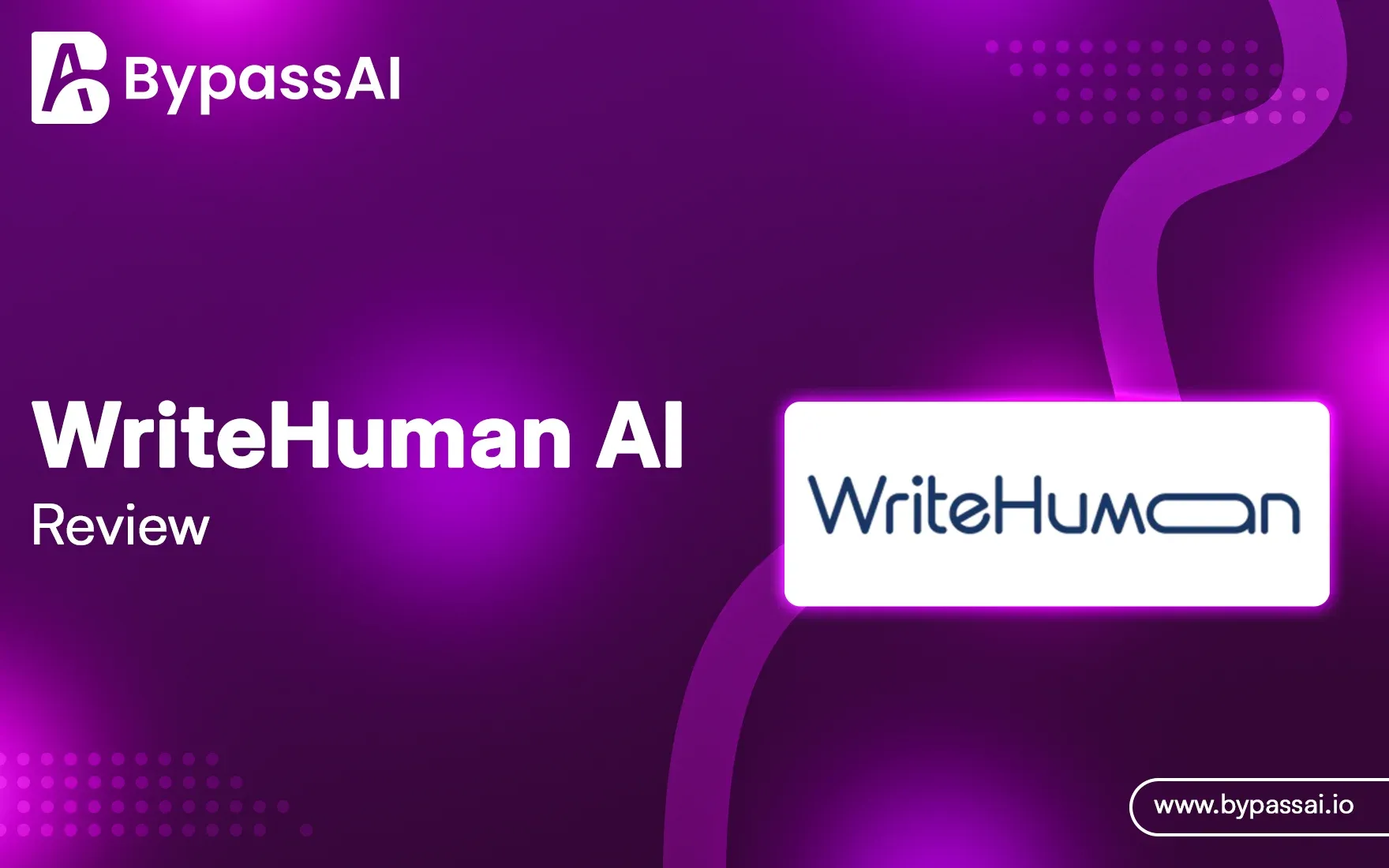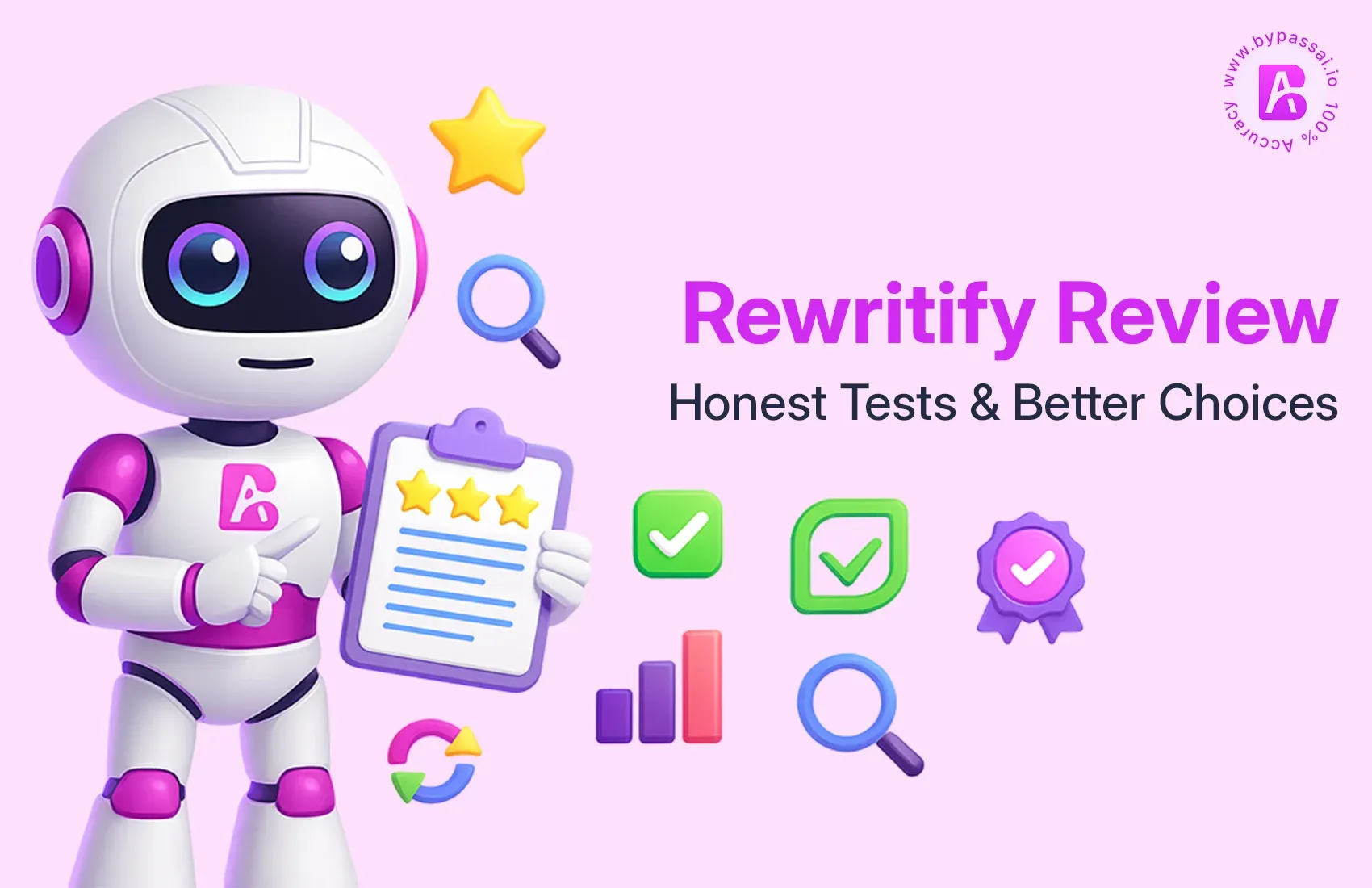Sign In
Welcome to Bypass AI! Sign in to continue your exploration of our platform with all its exciting features.
Forgot Password?
Don’t have an account ? Sign up
Sign Up
Embrace the Future with Bypass AI! Sign up now and let's rewrite the possibilities together.
You have an account ? Sign In
Enter OTP
We’ll send you an OTP on your registered email address
Back to Login
Forgot Password
We'll Send You An Email To Reset Your Password.
Back to Login
Enter OTP
We'll send you an email to reset your password.
Back to Login
Confirm Password
Please enter your new password.
TABLE OF CONTENTS
Quick Summary
What Is WriteHuman AI?
WriteHuman: Why Are People Interested?
Features of WriteHuman
Pros and Cons of WriteHuman
How Well Does It Work? A Review of the Results
Result
Conclusion
FAQ's
WriteHuman AI is fast becoming an incredible tool that detects AI-generated text. The development of sophisticated devices for creating content will soon put these tools to great test. In such an age, WriteHuman becomes one credible detection tool with all claims of precision in capturing AI generated text. But how effective is WriteHuman AI really?
This blog highlights different features and roles of the software in terms of performance and credibility via user experience, testing and reviews in the field. It will involve understanding user experience, judging the accuracy, whether AI-generated text will pass as human writing, and its practical side applications in academia, publishing, and commercial marketing venues. We also study how it measures up against the same tools found in the market and its role with regard to content authenticity in the digital age.
Quick Summary
WriteHuman AI has a sleek interface that provides a straightforward way of detection for AI-generated text. Its promise seems great however, the results of a recent test show mixed ones, thus raising questions about accuracy and reliability. The reader of this review will look into its functionality and compare it with some other tools available to know whether it is effective.
What Is WriteHuman AI?
WriteHuman AI is a specially designed tool for the detection of AI-generated content in his/her work. This is meant for quite a wide circle from educators and content creators to businesses looking to stay original in writing. It gives a detailed analysis of the text input to know if the content was generated artificially or via human effort or action and helps the users maintain ethical values.
WriteHuman: Why Are People Interested?
Detection tools are now an essential demand with the continuous upsurge of the usage of various AI writing texts, such as that of ChatGPT, Gemini, Microsoft Copilot and Jasper AI. Writing Human, for instance, deals with some issues such as:
Academic Integrity: Ensuring that students submit original work.
Professional Standards: Ensuring trust and authenticity in business correspondence.
Plagiarism Prevention: Avoid accidental copying or reliance on AI-generated material.
Content Verification: Allowing publishers and editors to authenticate originality in works submitted.
Features of WriteHuman
WriteHuman AI is equipped with multiple features that qualify it as one of the best in the industry on AI detection. These features have been designed to meet the needs of all people-from individual writers to large organizations. The following details capture the features of WriteHuman.
1. Analysis of AI Detection
The tool has been developed to use advanced algorithms in text assignment to offer an in-depth breakdown of origins. The tool would indicate whether the data has been generated humanly, AI, or both. Along with this, the tool assigns confidence scores to this analysis, allowing users to know what probability score has been computed to indicate the likelihood of AI in the text. It is helpful in detecting subtle AI contributions in edited or hybrid text.
2. User-Friendly Interface
The simple design of the tool is for making it convenient for its users who are of different levels of technology exposure. Its easy navigation and minimal learning curve enable even non technical oriented users to quickly upload their text and analyze it as well as interpret the results. It features a very clean dashboard presenting the result in a visually appealing, yet easy to understand format to enhance user experience.
3. Integration Capabilities
All popular writing platforms, such as Google Docs and Microsoft Word, can seamlessly integrate with WriteHuman AI. This will be possible as users may now check any content inside these applications instead of moving back and forth with different tools. Such integration becomes the most essential for writers, editors, and other content creators who always look for real-time feedback during the writing process.
4. Specific Content Highlighting
WriteHuman AI has for some time been putting that to function, with an action known as specific content-highlighting, where specific sections are marked where the user thinks an AI-generated it. It points out that the content within the document is considered questionable for immediate corrective action. It is very informative for such users as educators, publishers, and professionals who require very particular insight into problematic areas.
5. Comprehensive Reports
The tool creates detailed downloadable reports based on the assessment results analyzed. Those contain metrics such as confidence scores, segmentation of content, and highlighted portions. Such records will prove useful for documentation, audit and formal evaluations, availing itself for very many organizations to manage their authentic contents.
Read more, BypassAI IO vs WriteHuman AI
Pros and Cons of WriteHuman
Here are some pros and cons of WriteHuman AI:
Pros
1. Simplicity: A straightforward interface that is really user-friendly for any kind of user.
2. Complete Inspection: It will show you the exact regions where your content has glitches so that you can understand its composition in depth.
3. Versatile: This operates with different types of text formats and is also very well integrated with leading writing platforms.
4. Actionable Suggestions: This has suggestions on how to improve or rewrite troubled content.
Cons
1. Inaccuracy: It fails to detect highly humanized AI content and results in false positive or false negative responses.
2. Lesser Precision: A little inferior quality purport to its contemporaries; it gives much lesser per mixed conclusions.
3. No Customization: It provides few options to change detection thresholds or tailor results for specific demands.
4. Relatively New Tool: WriteHuman is still not very much into the market and is branded as a new tool in comparison to other well-known alternatives.
How Well Does It Work? A Review of the Results
Test Methodology: In order to ascertain the functionality of WriteHuman, we laid out a test procedure comparing the performance with other tools, including BypassAI, on three distinct levels.
Step 1: Produce AI-Generated Paragraphs
To simulate AI-generated content that closely resembles natural human writing, we utilized ChatGPT to create paragraphs on the topic, “The Role of Artificial Intelligence in Climate Change Mitigation.” The paragraphs were carefully designed to reflect diverse writing styles typical of real-world scenarios. This step ensured that the content could be assessed effectively in detection tools to distinguish between human-written and AI-generated text.
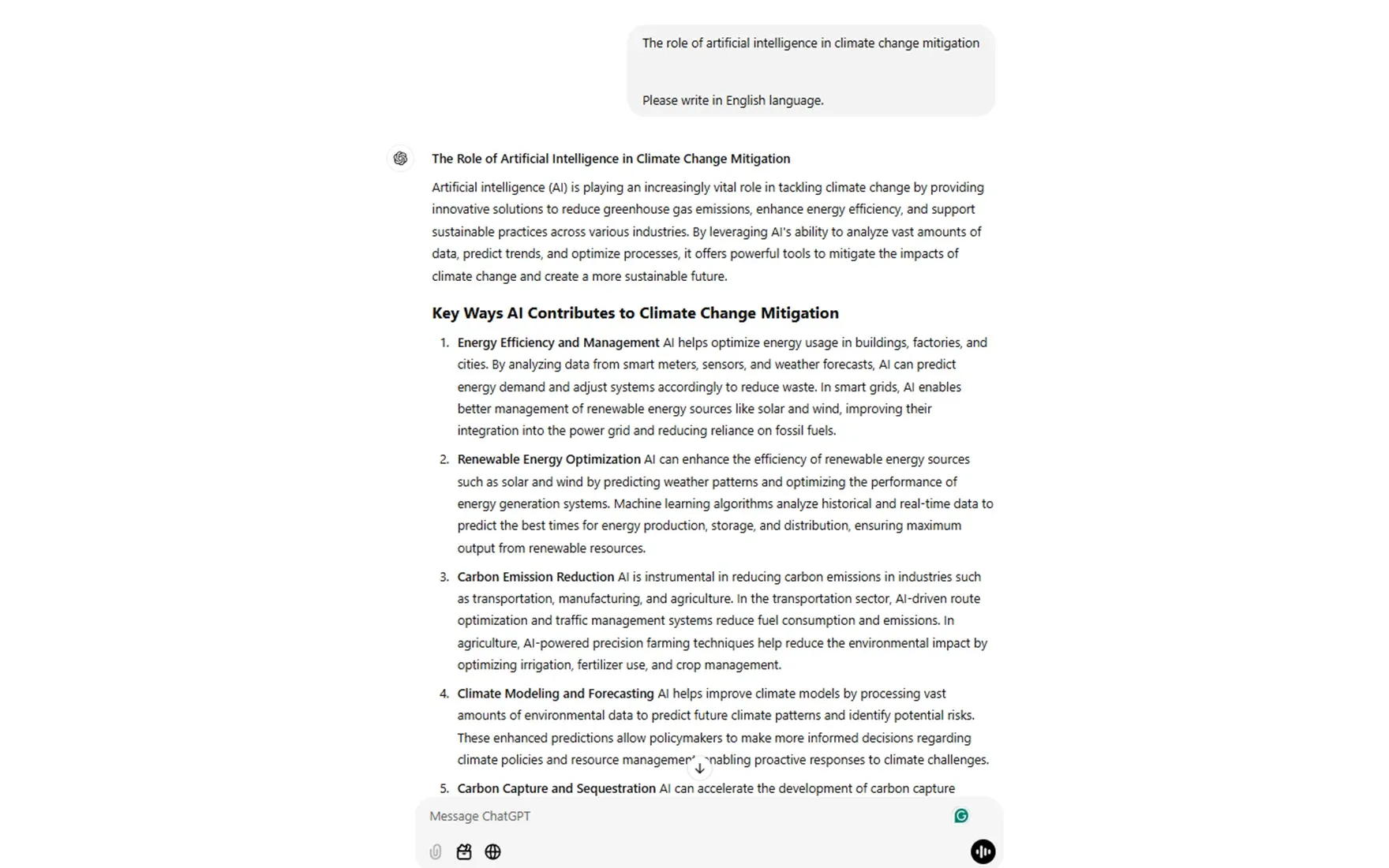
Step 2: Testing With the Bypass AI Tools
The content generated in Step 1 was then analyzed using the Bypass AI Detector, a leading tool for identifying AI-generated text. The detector highlighted sections of the text that were entirely AI-generated, providing an in-depth analysis of its origin. The results clearly showed that the tool successfully detected all AI-written paragraphs, marking them comprehensively to facilitate standardization. This highlights the tool's reliability in distinguishing AI-generated content.
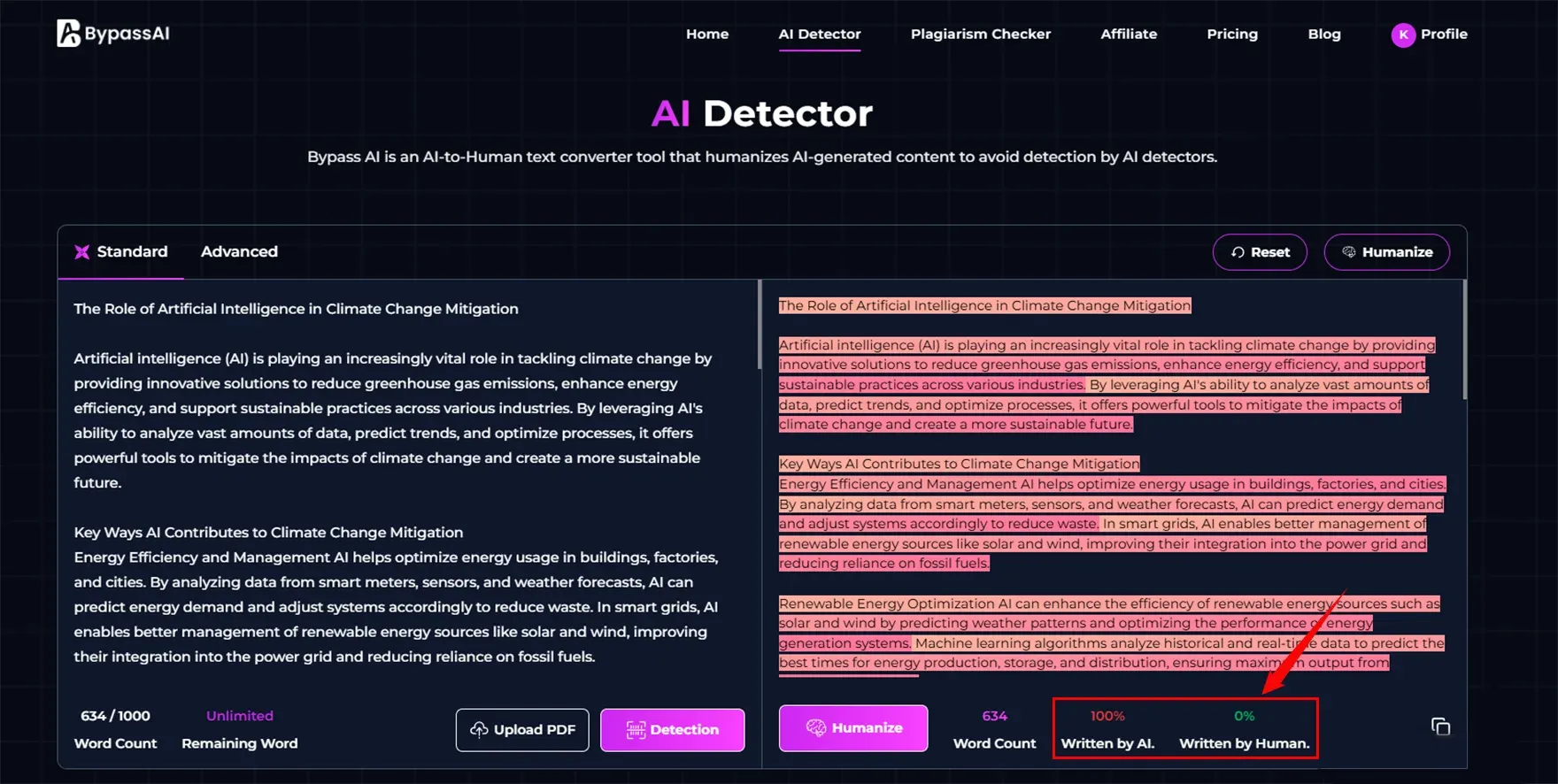
Step 3: Testing the Detector of WriteHuman
To ensure a comprehensive evaluation, the content was also tested using the WriteHuman Detector, another trusted AI content detection tool. However, the results were less consistent. While some portions were identified as human-written, others were marked as AI-generated, even within the same text. The varied responses underline the challenges faced by such tools in reliably distinguishing humanized AI content, showcasing a potential gap in their detection capabilities.
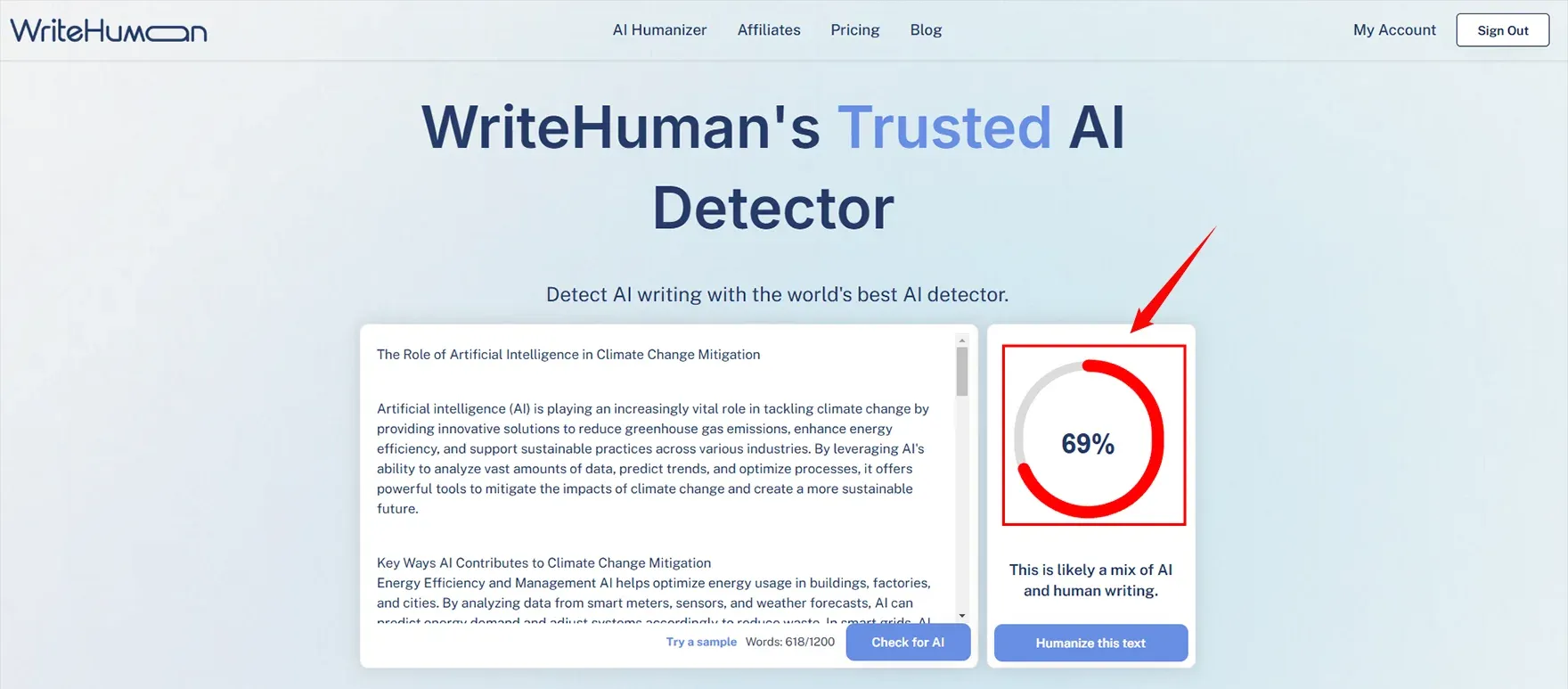
- Result: Mixed and Unreliable.
Result
WriteHuman AI was not quite as reliable in its performance, compared to BypassAI. Although some elements are detected as having been generated by AI, inconsistent introductions remain for the most part. It cannot be used in those highly specific applications in which it is now expected—from academically assessed to professionally audited content.
Conclusion
WriteHuman AI comes up as one of the impressive measures in the direction of addressing the growing need for AI detection. However, because of performance discontinuity, it is not very dependable. Tests for content show pretty mixed results, and as has been documented, WriteHuman does not measure humanized AI content at all. In contrast with this, where Bypass AI and other better tools come in handy, approaches with a much superior level of accuracy require these for absolutely critical use cases.
WriteHuman AI has some good features, such as content highlighting and very elaborate reporting, but the actual detection technology behind it needs a lot of work. So for the moment, a user interested in getting sound AI detection would go to BypassAI.
With much-needed improvements and continuous development, WriteHuman AI could potentially become a major player in the AI detection arena. As for now, because of the restrictions snagging the tool, it would actually be best suited for casual use.
FAQ's
1. Is WriteHuman AI right for every text written artificially?
WriteHuman AI does not have a standard detection for every write-up as it doesn't handle humanized AI content, thus giving out mixed signals.
2. Write the unwanted alternatives of WriteHuman AI.
BypassAI are better in terms of precisional reliability while identifying the same as or different from an original.
3. Whom will WriteHuman benefit?
WriteHuman will impact many, including educators, content creators, and businesses, but awareness of its limitations should be emphasized.
4. Free usage of WriteHuman?
Details of the price will be much different, but the free plan and the pay plan under many of the detection tools, including WriteHuman, are offered.
5. What does WriteHuman have that Bypass AI lacks?
WriteHuman loses the race in terms of accuracy against BypassAI, which gives out more consistent and reliable results.

